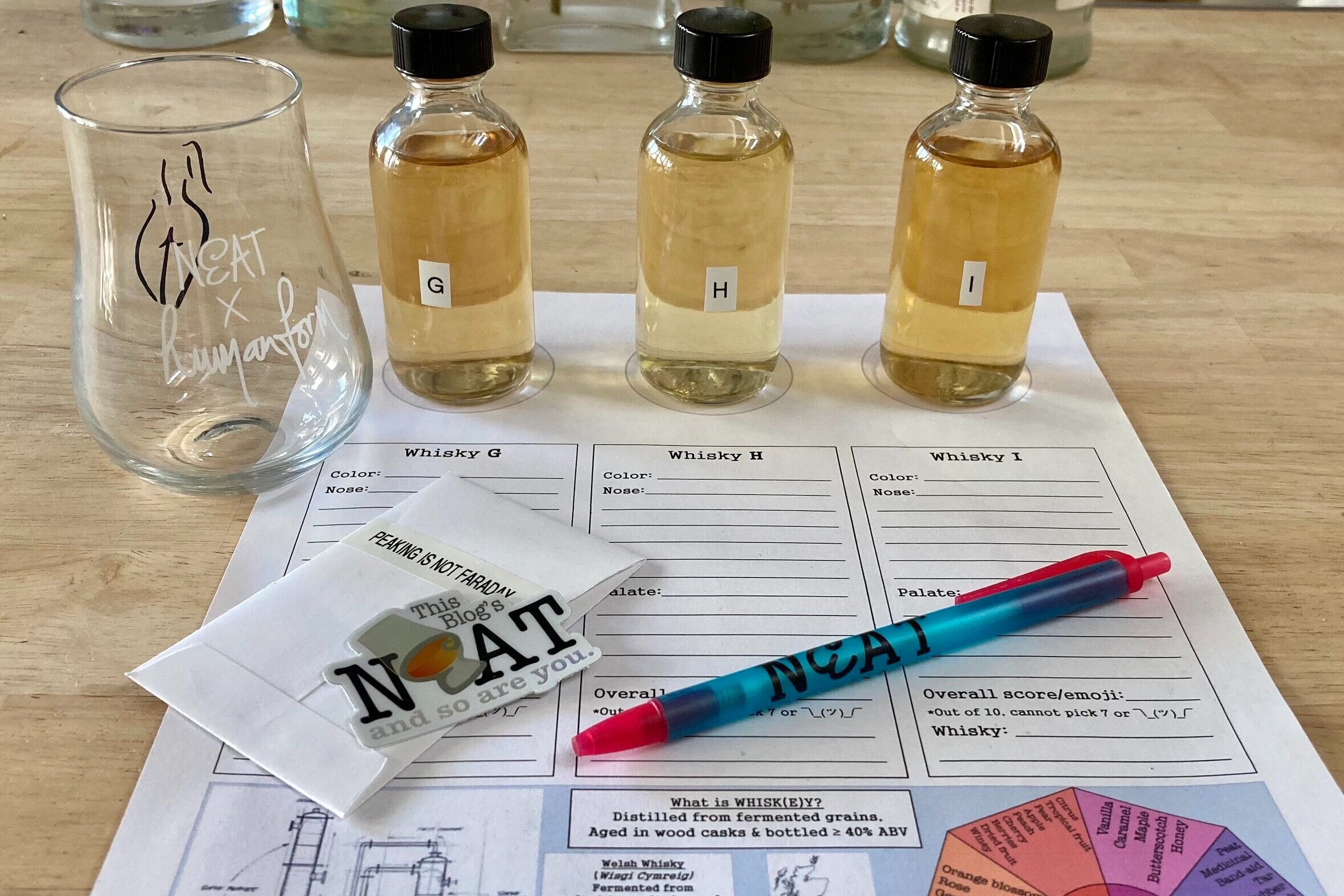Blind Tasting No. 15 Recap
St Patty’s Day
St Patrick’s Day (also my dad’s birthday) needs to be celebrated with Irish whiskey. So that’s precisely what we did. We tasted three very unique Irish whiskeys rather than the conventional ones that you might pair with your Guinness. But before I tell you what we tried, I have some fun facts about Irish whiskey that maybe you haven't heard before.
The Scottish like to believe that they created whiskey, however it’s said that Irish monks began distilling whiskey back in 1000 AD, and therefore, were the original whiskey distillers.
The Coffey still, which is widely used in whiskey production, was produced by an Irish distiller, Aeneas Coffey, in 1830.
The largest operational pot still is 31,618 gals and sits in front of Midleton Distillery in Ireland.
John Jameson, the founder of Jameson, was Scottish.
Single pot still Irish whiskey was created as a tax evasion.
Let’s talk about single pot still Irish whiskey for a moment because it’s a phrase you’ve probably come across when perusing the Irish whiskey section of the liquor store. A single pot still Irish whiskey is produced by one distillery using a mash of malted and unmalted barley that must be pot distilled and aged in Ireland for no less than 3 years. Back in the day (think 1800s) when the British government was trying to figure out the best way to profit off of Irish distillers, they settled on taxing malted barley. As you might imagine, this hit distillers who were using entirely malted barley mashes (single malt) the hardest. To combat this, distillers replaced some of the malted with unmalted barley. Eventually the government figured this out, felt cheated and pivoted to taxing distillers on something else. However, the tradition of using unmalted barley in the mash remained. It’s said to give Irish whiskey a uniqueness that’s more cereal forward.
Pot still Irish whiskeys also tend to be triple distilled. This is not entirely unique to Irish distillers as there are a handful of Scotch and American whiskey producers that use triple pot distillation, but it is most common among pot still whiskeys. Triple distillation allows the distiller to preserve some characteristics from the raw ingredients in a slightly more refined way than double distillation.
The combination of triple distillation and the use of unmalted barley in the mash helps give Irish whiskey its reputation for being friendly and approachable. But remember, not all Irish whiskeys are single pot still whiskeys or are triple distilled. In fact, most are blended whiskeys and they are even more light and approachable.
Let’s see what types of Irish whiskeys we tasted!
Knappogue Castle 12 year old Triple Distilled Single Malt Irish Whiskey:
The 12 year old is Knappogue Castle’s signature expression produced by the Cooley Distillery. It’s made from 100% malted barley, triple pot distilled and aged for 12 years in ex-bourbon barrels. The members picked up floral, caramel, brown sugar, cake, ripe red apple, wet moss, overripe apple and musty notes on the nose. The palate was described as cozy and approachable with some funkiness.
Mosswood Irish Whiskey finished in Amontillado sherry cask:
Mosswood is located in Berkley, CA and focuses on unique barrel finishings. This Irish whiskey was the first sherry barrel finished whiskey that they released in 2014. The Irish whiskey was sourced from Cooley Distillery and finished in an amontillado sherry cask. The members picked up licorice, orange, light, floral and vanilla on the nose. Those aromas were mirrored with vanilla, buttery, butterscotch, apple, coconut, oxidized wine and orange pez on the palate.
RedBreast 12 year old Cask Strength Single Pot Still Irish Whiskey:
When you think of single pot still Irish whiskey, you think of RedBreast. It’s one of the most popular Irish whiskey brands and one of the few that have a cask strength expression. This whiskey was produced by Midleton Distillery using a malted and unmalted barley mash that was triple distilled and aged for 12 years in ex-bourbon and ex-sherry casks. There were notes of water ride at Epcot, butterscotch, cut grass, earthy, musty, moss, mint and peanut on the nose. The members tasted cinnamon spice, earl gray tea and orange on the palate.
This tasting was very challenging. The tasting notes provided for each whiskey (usually taken from the producers) had a number of overlapping flavors making it difficult to identify the key components of each whiskey. Despite that, over half of the group was able to correctly identify one of three whiskeys.











